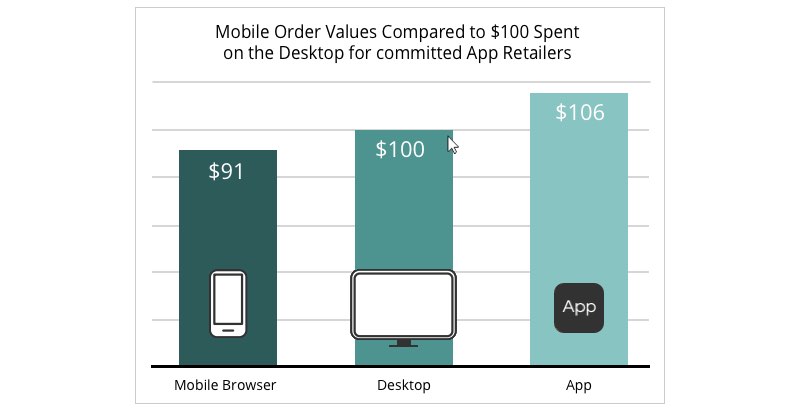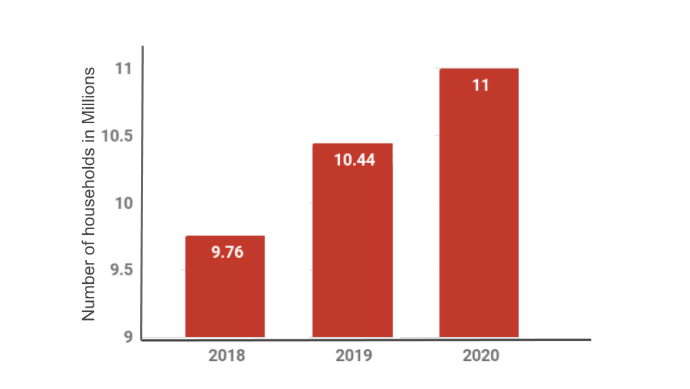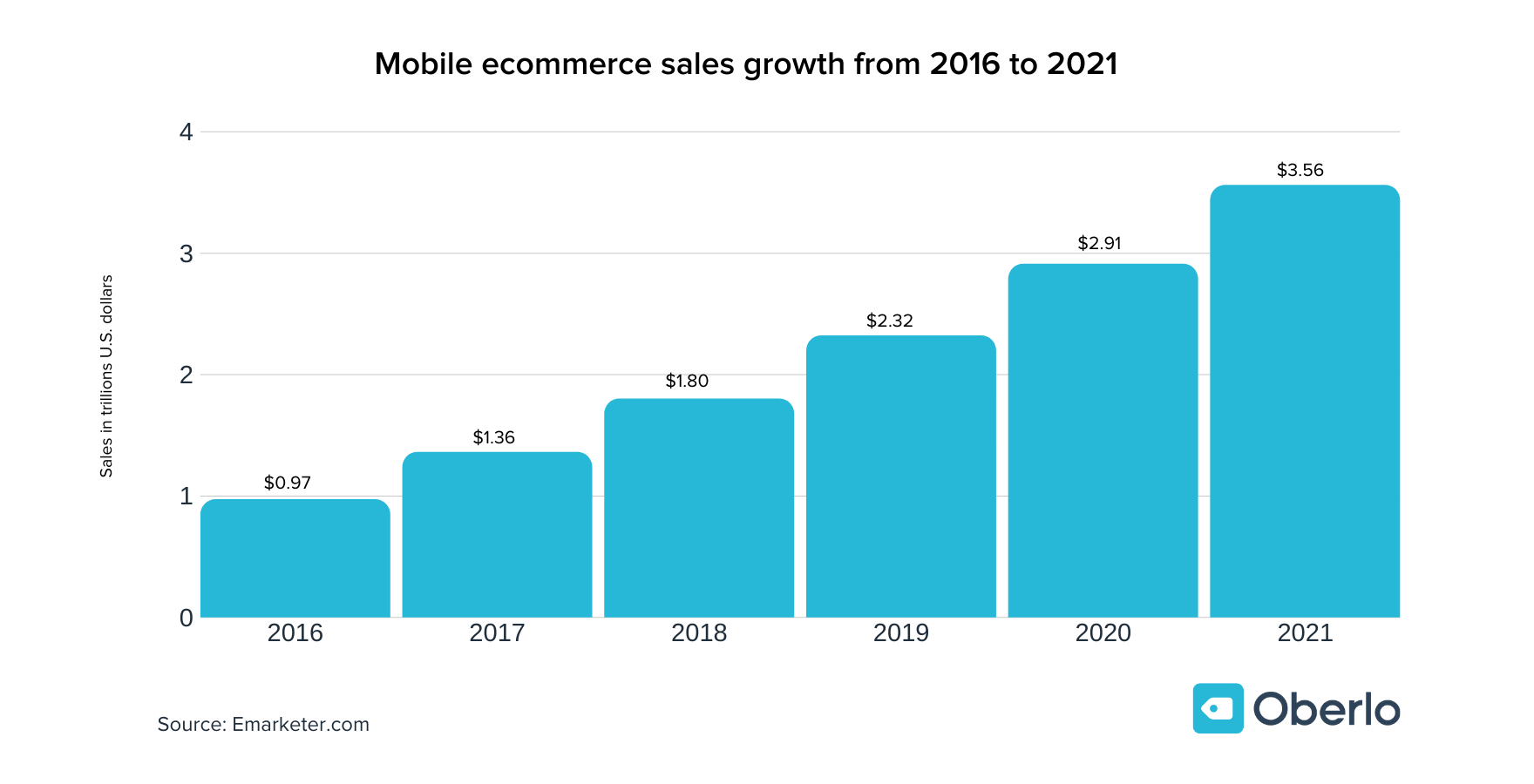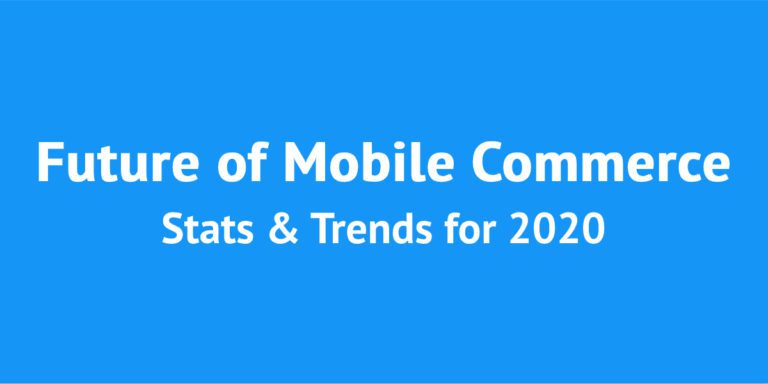There is a saying What goes up must come down means the things changes. But seems this doesn’t hold in case of M-commerce or is it just an ongoing thing or a fad. Well looking at the trend cycle that shows’ M-commerce is going to be the “Next Big Thing”, and should we believe it. Not sure but we can believe the stats because numbers don’t lie. The continued proliferation of smartphones across all continents, coupled with the advancement of mobile e-commerce technology and the enhancement of user experience, continues to drive growth in m-commerce at an unparalleled pace.
Here is the Mobile Commerce Infographic developed by Magneto IT Solutions
The Prospect of Mobile Commerce Stats and Indicators
Statistics To look Into
Here are some stats that show how hooked people are to their smartphones. 59% of the world population has internet access with over 2.5 billion smartphone users in the world. Time spent is over 3.5 hours per day on their mobile phones. The user base is expecting to be 3.8 billion by 2021. The future potential of this market can be foreseen by that $2.3 trillion of m-commerce transactions were made in 2019. One-Third of eCommerce is powered by mobile application and $3.6 trillion of revenue expected to be generated by 2021.
Top M-Commerce Markets
- China – $0.75 trillion
- US – $0.21 trillion
- UK – $63.8 billion
- Japan – $34.5 billion
- South Korea – $28.8 billion
The market is expected to mark a CAGR of 27% by 2020-2025 with Asia Pacific being fastest-growing. Also, North America and European nations to be the biggest markets for revenue generation in 2020-2024.
The Top 10 Players in M-Commerce Market
- PayPal
- MasterCard
- Visa
- Gemalto
- Ericsson
- Amazon
- Apple
- Walmart
- SAP
Types of M-Commerce Applications
A quick recap on what is Mobile Commerce, it refers to any form of transaction/service that is executing with the aid of a mobile device, such as a smartphone.
As mobile commerce span covers a wide variety of transactions but can be typically classified into three:
1. Mobile Shopping
Its implementation is quite similar to e-commerce but can be accessed through a mobile device. There are applications designated for each commodity one wants to buy. Also, social media platforms allowing in-app purchases and connected to online stores. Example: Amazon, eBay, etc.
2. Mobile Banking
Not very different from online banking, although certain forms of transactions might be limited or exclusive to mobile devices. It requires a dedicated application to perform transactions.
3. Mobile Payment
In this digital wallet is being installed on cell phones through an app that is linked to the customer bank account for performing any transaction. The transaction is completed by entering a pass-code.
Coming to the stats related to Mobile banking, over 1 billion phone users used mobile banking. Also, 72% of the UK adult population will use a phone app for banking by 2023. In addition, 62% of Europeans access banking services through a mobile app.
87 percent of consumers are involved in online product research before purchasing. 83% of shoppers who prefer online shopping through smartphones. It is reported that the conversion rate on a mobile app is around 3 times more what happens on a mobile website.

Mobile Payments Around the World
How massive mobile payments across globe can be accounted for by this, that around 2.1 billion people are using an e-wallet. In addition, more than 66% living in the Asia Pacific Area. Also the most active age group is millennials with a user base of 35%.
Below it shows that payment made by the number of households through scanning a QR code has increased over a while.

The e-payment total market cap is predicted to be $3,388 billion by 2022.
M-Commerce and Social Media
Social commerce rise is going to be inevitable. Marketers are using social commerce platforms to increase traffic over e-commerce websites and in turn increase their sales . Since 85% of all e-commerce purchases for social media platforms are through Facebook, stores with a social presence have on average 32% more sales than the stores without. Also 55% of the purchases influenced by social media by pushing out Ads related to user search history.
Why is M-Commerce being so Successful?
Mobile commerce has changed the e-commerce sector by bringing in its benefits and making it a perfect package for the end-users, some of the advantages are:
1. Accessibility
With a mobile device, users have an option to buy their favorite stuff from anywhere because we are always on the go in today’s lifestyle.
2. International Audience
With over 2.5 billion smartphone users across the globe, mobile commerce has a great market to reach out to more audiences.
3. Easy and faster checkouts
The checkout process is smooth as they have multiple payment options wherein one just needs to enter credentials and it has done with just a click.
4. Better Customer Experience
Time and effort are reduced as the mobile apps load faster which is not in case of going all the way to an offline store.
5. Social media
Social Media is also a key promoter of eCommerce industry.
M-Commerce Forecast
The future is bright for mobile commerce which is evident if we look into the predictions:

- 50% of all e-commerce sales, worldwide will be through m-commerce by 2021.
- M-commerce revenues expected to hit $423.24 billion by year 2022.
- The estimated growth rate is 56.5 % of mobile coupon industry in coming years.
- The predicted penetration of application users will be 17% by 2023.
- 9% will be the M- commerce sector share in the US retail sales by 2021.
M-Commerce Future Trend
Some of the future trends that shouldn’t be missed out in the coming year are going to become more dominant.
1. Augmented Reality (AR)
There is just one flaw with e-commerce that customers don’t get to see and touch the product before buying it.
With the introduction of AR technology, customers can virtually try products in real-time.
2. Voice Search & Control
Virtual assistants like Google Assistant and Amazon Alexa are changing the trend of how customers do online shopping.
3. Multichannel Experience
Multichannel approaches include providing consumers with a seamless experience through platforms, channels, and networks.
4. Chat Bots
Live bots built into the mobile proving to be a game-changer in improving customer services.
5. Image recognition
People will be able to search for items on their mobiles using image recognition technology.
- AI in customer support
- Customization
- Crypto payment
- Social Media
Final Words
Mobile trade will see a major change from its existing model to the rise of emerging technology and trends. The easiest way to keep up with the times and innovations is to create a mobile app for your eCommerce website. The vendors will emerge with new growth opportunities provided by mobile commerce helping them pave the path for the future. Therefore, with increasing mobile subscriptions and internet reach to general masses, the m-commerce trend is going be the Next Big Thing. In conclusion, the goals and objectives identified should be clear in order to attain high customer value and trust in the brand to exist in the long run.

